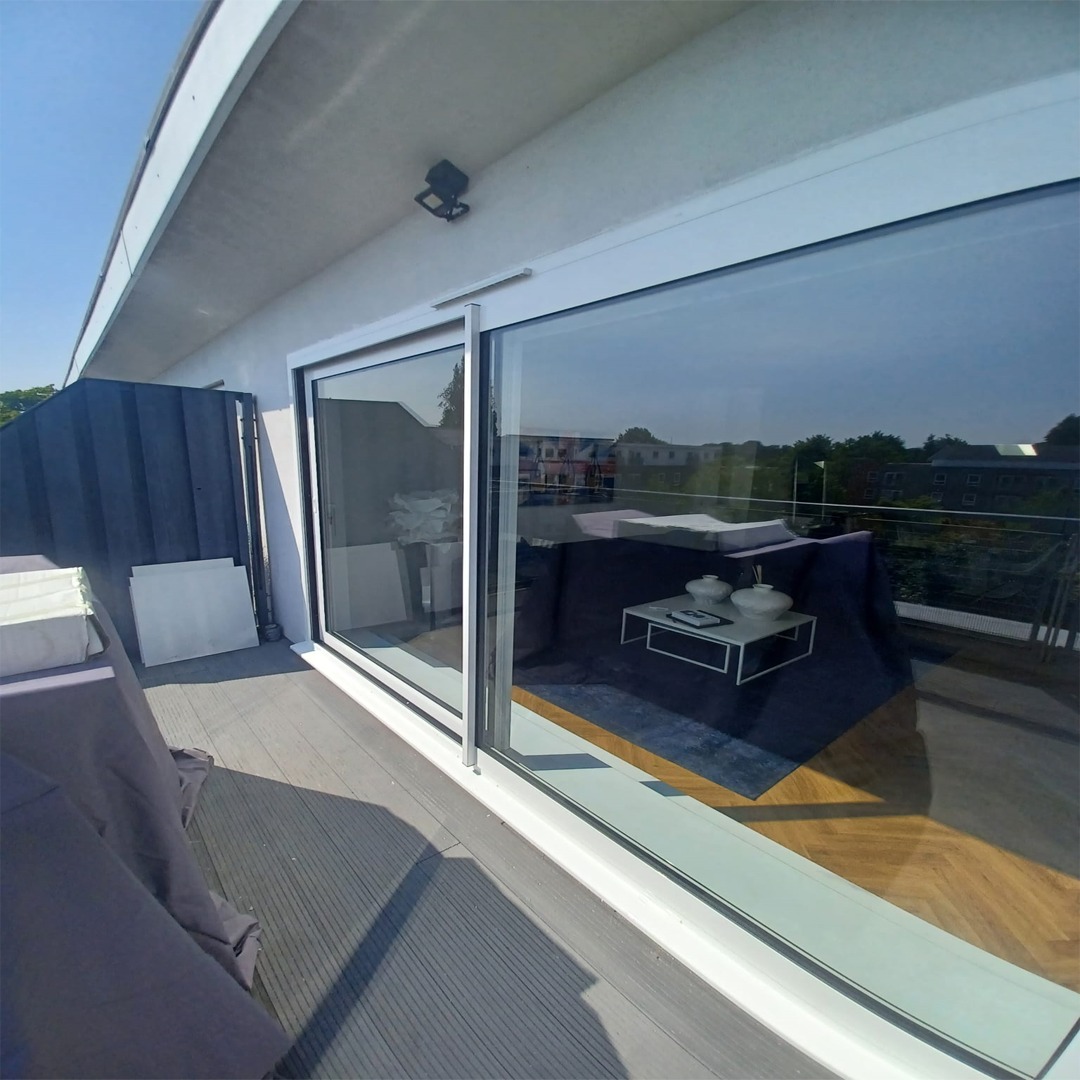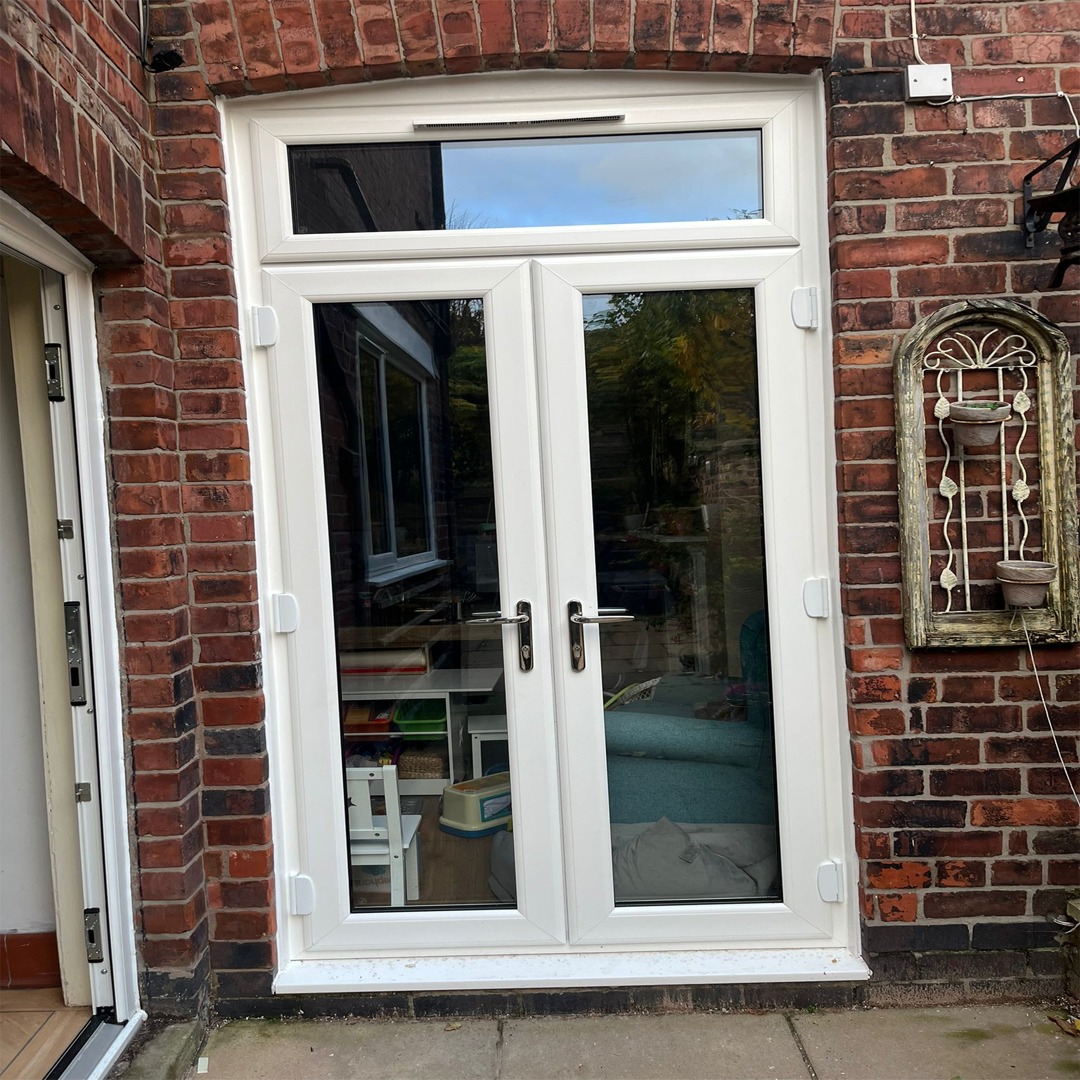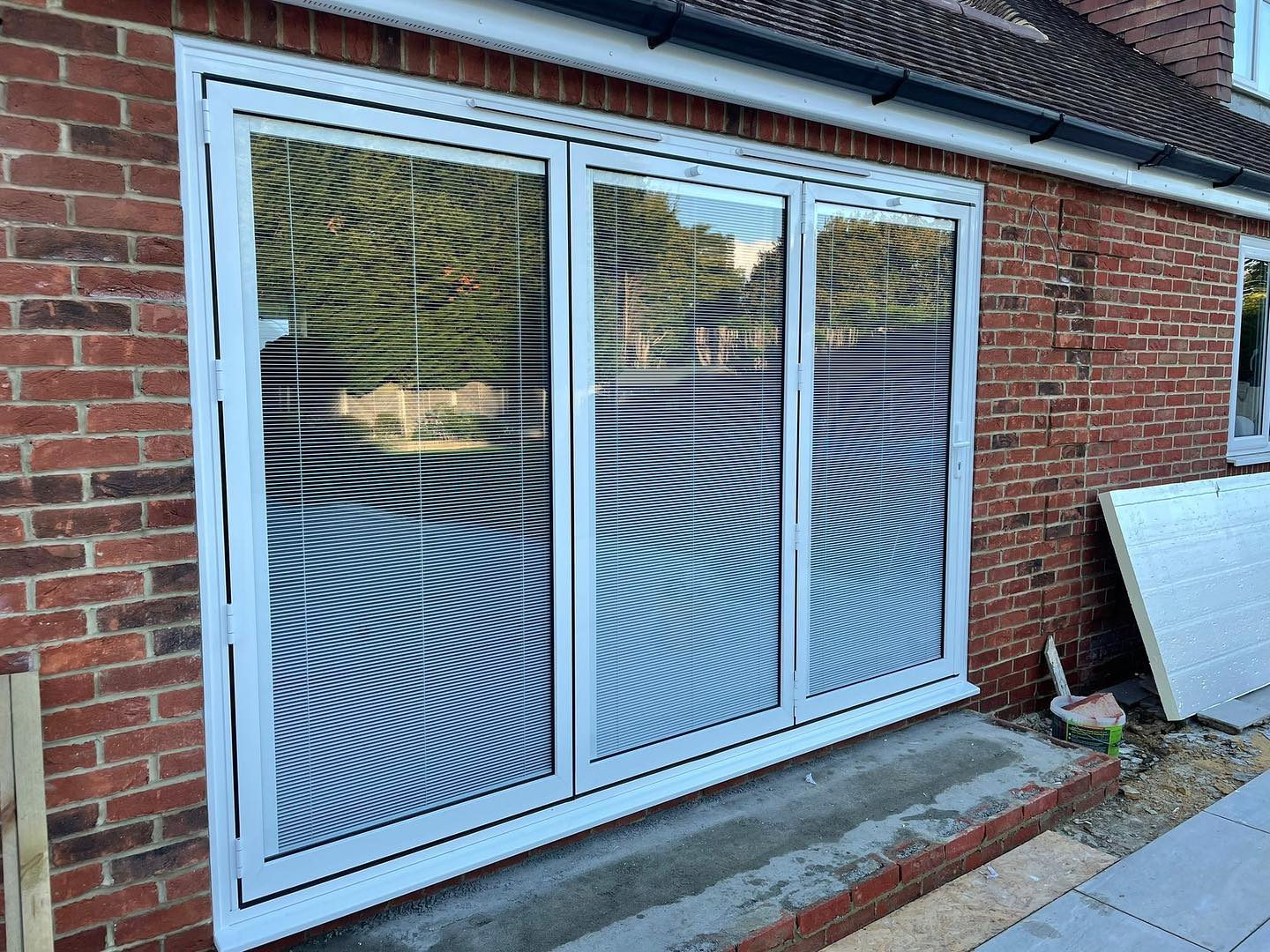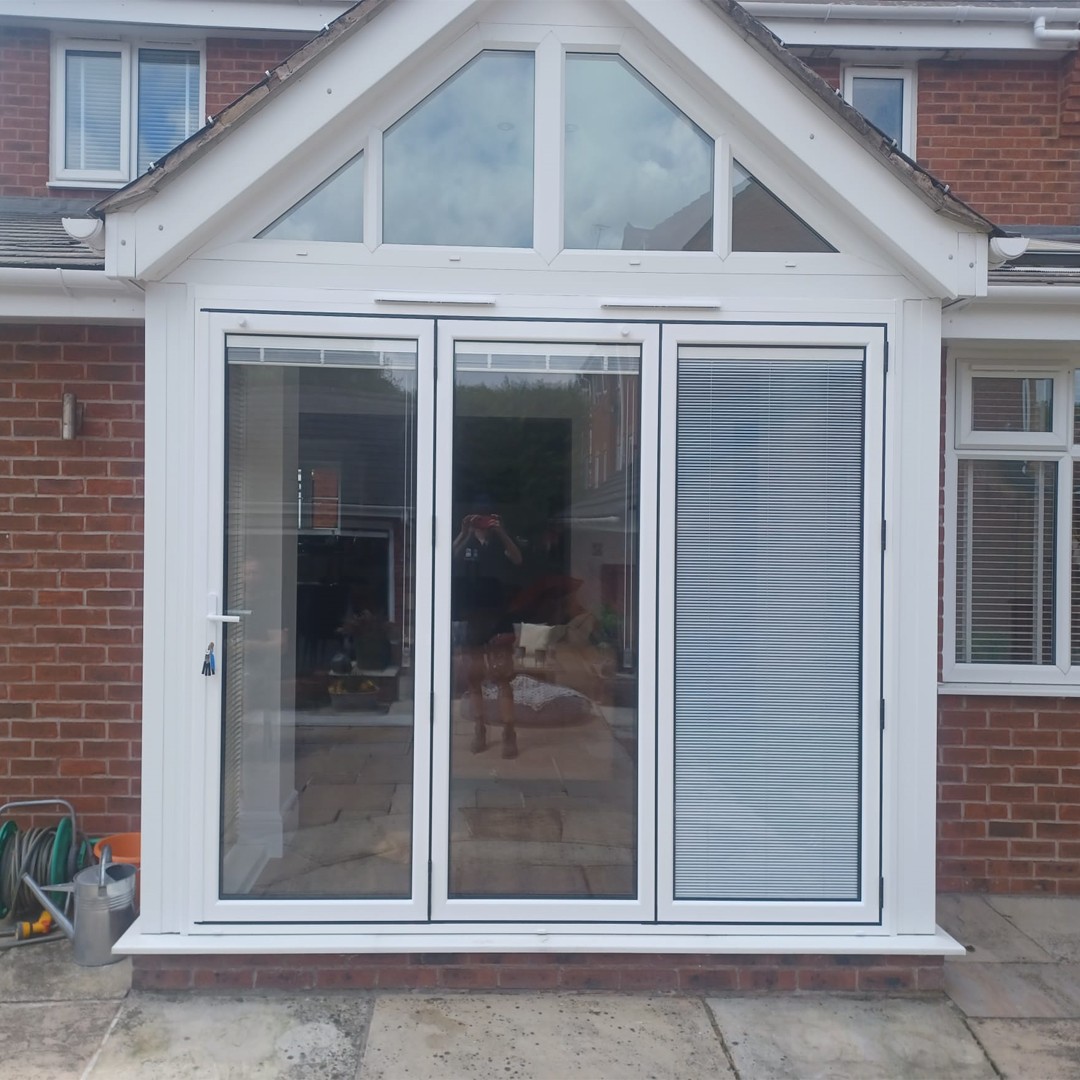Deciding between different types of doors is easier if you have all the relevant information. To that end, we’ve created this side-by-side comparison of bi-fold doors, sliding doors, and French doors, helping you make an informed choice.

Sliding Doors:
Sliding doors are doors that slide behind one another in various configurations.
Aesthetics:
Sliding doors can be customised to suit most styles but tend to have a modern and minimalist appearance. Their large areas of glazing provide excellent views, but they are not uninterrupted due to the panels sliding over each other, so the frame is always visible.
Functionality:
Sliding doors glide on a track one behind the other and can be opened to the full width of the panel or just a crack to let fresh air circulate. You can also choose to have sliding doors that open in the middle and slide over fixed panels on either side.
Cost:
Typically more expensive than French doors but cheaper than bi-fold doors, sliding doors are the mid-range price option.

French Doors:
French doors are a pair of doors that swing outward (or inward) on hinges. They can be patio doors or external doors.
Aesthetics:
French doors open the same way most traditional doors do, on hinges. They do not open as wide as sliding or bi-fold doors, but they are easy to open and close.
Functionality:
French doors open the same way most traditional doors do, on hinges. They do not open as wide as sliding doors or bi-fold doors but they are easy to open and close.
Cost:
French doors are the most affordable option of the three. They tend to be smaller and do not require as many ‘parts’ as sliding and bi-fold doors, which can affect the price.
Pros and cons of each type in terms of aesthetics, functionality, and cost:
Type of Door | Pros | Cons |
Bi-fold | Sleek and sophisticated, timber or aluminium, customisable, slim sightlines offered, panoramic views, smooth glide, easy to use, can be fully opened, customisation available, multiple configuration options | More expensive, more difficcult to install, space needed for doors to stack, you need to unlock the panels from their frames to open the doors |
Sliding doors | Can be partially opened for ventilation, offer great views, a contemporary appearance, and a mid-range cost | One panel is always closed, and they can look too modern for some properties |
French doors | Visually appealing, classic and elegant aesthetic, frames and glazing options can be customised, easy to open and close, and cheaper than the other door types | Heavier/larger frames, require space to open onto, the configurations are limited, and the maximum size is smaller |

Insights from architects and interior designers on choosing the right door for your home.
Architects:
From an architectural point of view, your first consideration should be the space you have available. For example, bi-fold doors and sliding doors are the best options for creating better indoor/outdoor flow and maximising space. French doors require more space to open out but provide character and charm.
Interior Designers:
You must also consider the existing decor, and how your doors will fit in. Interior designers use natural light to make rooms look bigger, with larger glass panels facilitating more natural light. All three door types offer natural light, but French doors let in less due to the heavier thicker frames. They are better suited to smaller spaces.
Cost:
French doors are the most affordable option of the three. They tend to be smaller and do not require as many ‘parts’ as sliding and bi-fold doors, which can affect the price.

The Future of Bi-Fold Doors: Trends and Innovations to Watch
Bi-fold doors continue to grow in popularity with eco-conscious homeowners looking for sustainable design solutions. Not only are they sleek and stylish, secure and energy efficient, but they can also help you reduce your carbon footprint through ‘green’ manufacturing. Here are three eco-friendly trends for bi-fold doors:
- Recycled Materials: aluminium is infinitely recyclable, and other eco-friendly materials are increasingly being used in manufacturing
- Energy-Efficient Glazing: energy-efficient glass, such as Planitherm, with low emissive coating helps to reduce energy consumption and improve insulation.
- Sustainable Wood Options: We ensure we only use sustainably sourced timber to ensure ethical manufacturing
Conclusion
Each type of door has its strengths and weaknesses, so it comes down to what you need from your doors and how much you are willing to pay. If you are short on space, sliding doors may be the best option, whereas those wanting a traditional look will probably favour French doors. Bi-fold doors combine some of the pros of both types of doors, but they do require space to stack when open.
If you want an expert opinion, our in-house fitters are happy to talk you through the best options to suit your needs.
Get In Touch Today
At Manchester Window Factory, we are experts in providing and installing the highest quality UPVC, aluminium and timber windows. We can talk you through your options and offer a free, no-obligation quote for your consideration. We also offer a pay monthly scheme to help you spread the cost. If you would like further information on any of our products or services, please don’t hesitate to get in touch.
We look forward to hearing from you!




